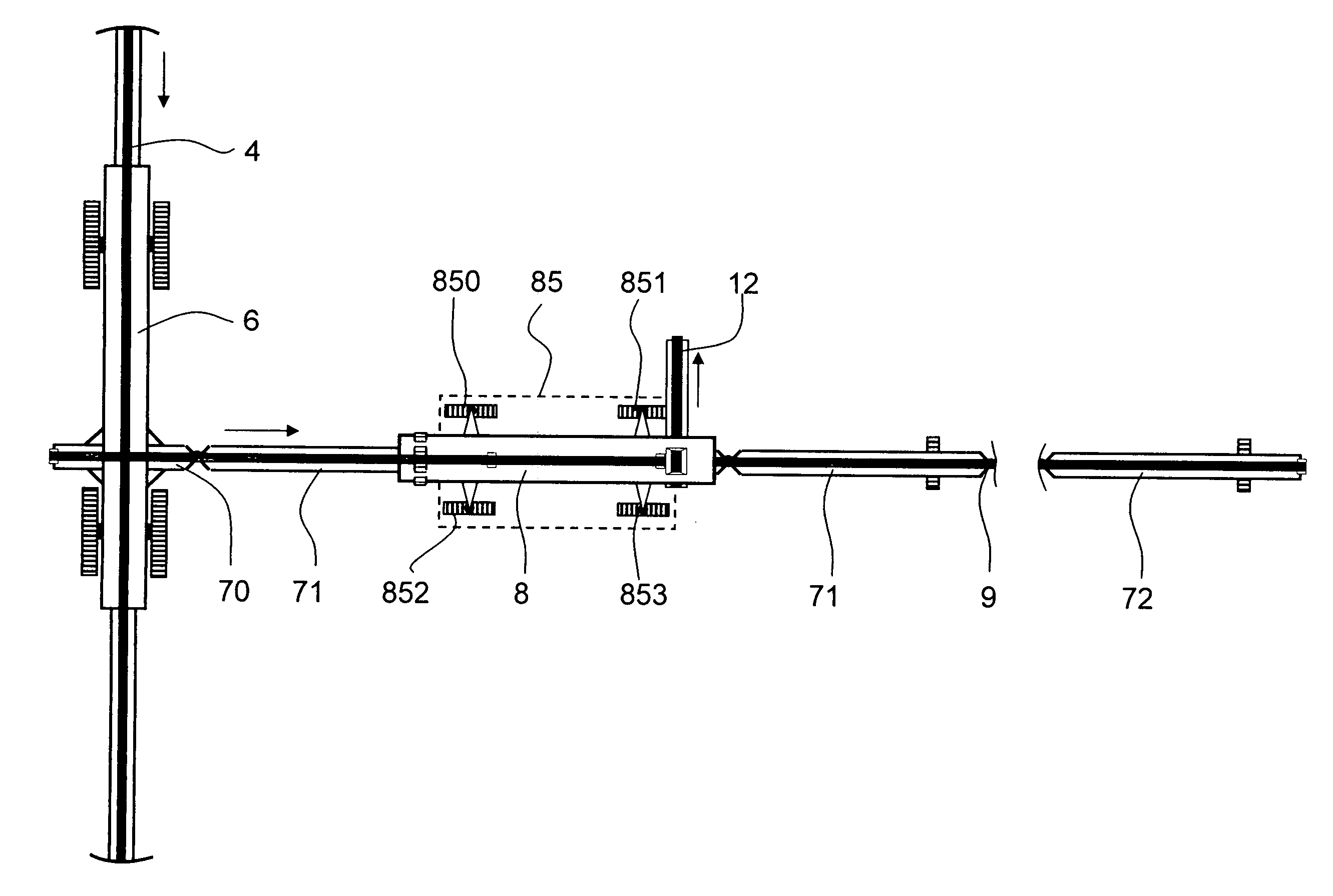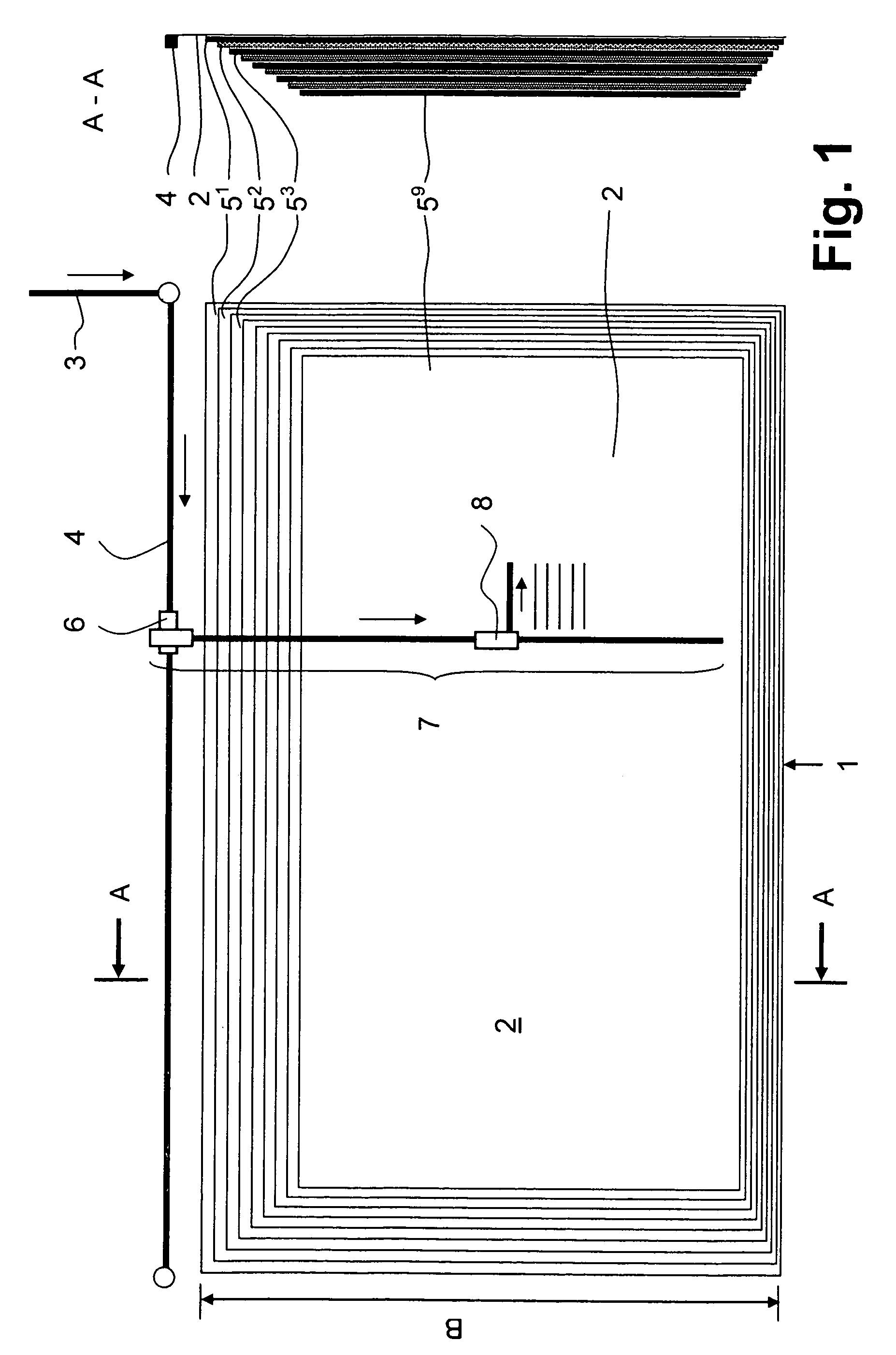Movable belt conveyor system
a belt conveyor and moving technology, applied in conveyors, surface mining, construction, etc., can solve the problem of not substantially compacting the up dump, and achieve the effect of low weigh
- Summary
- Abstract
- Description
- Claims
- Application Information
AI Technical Summary
Benefits of technology
Problems solved by technology
Method used
Image
Examples
Embodiment Construction
[0022]Referring to the drawings in particular, the leach pad 1 shown in FIG. 1 is intended for extracting ore according to the microbiological ore leaching process. The copper ore is piled up in a plurality of layers 51-n in a width B of one thousand meters and more to form a dump 2. The drawing shows nine layers 51-9. The copper ore is fed to the leach pad 1 by a first intermediate conveyor 3 and a second intermediate conveyor 4 following the former. This second intermediate conveyor 4 is stationary and extends in parallel to the longitudinal side of the leach pad 1 shown at the top in the drawing. The directions of conveying of these conveyors and of the conveyors following these are indicated by arrows. The intermediate conveyor 4 is equipped with a transfer carriage 6 according to FIG. 2. The transfer carriage 6 is displaceable by means of a caterpillar-type moving gear 61, which is arranged under the supporting structure 60 and comprises four steerable individual caterpillars 6...
PUM
 Login to View More
Login to View More Abstract
Description
Claims
Application Information
 Login to View More
Login to View More - R&D
- Intellectual Property
- Life Sciences
- Materials
- Tech Scout
- Unparalleled Data Quality
- Higher Quality Content
- 60% Fewer Hallucinations
Browse by: Latest US Patents, China's latest patents, Technical Efficacy Thesaurus, Application Domain, Technology Topic, Popular Technical Reports.
© 2025 PatSnap. All rights reserved.Legal|Privacy policy|Modern Slavery Act Transparency Statement|Sitemap|About US| Contact US: help@patsnap.com



